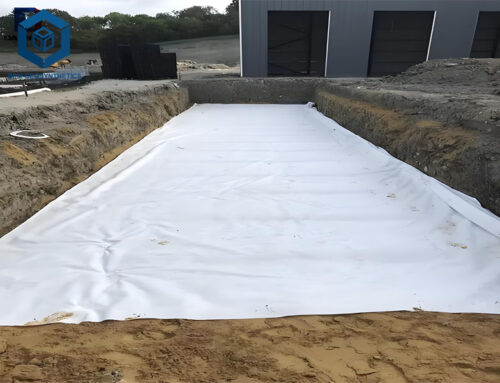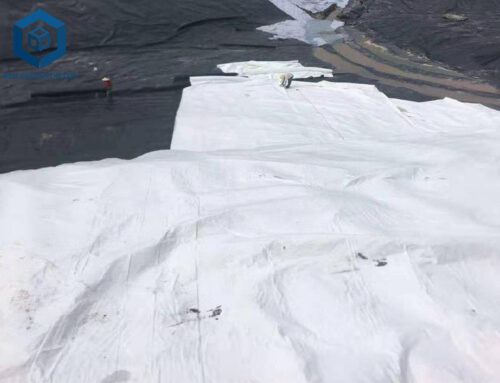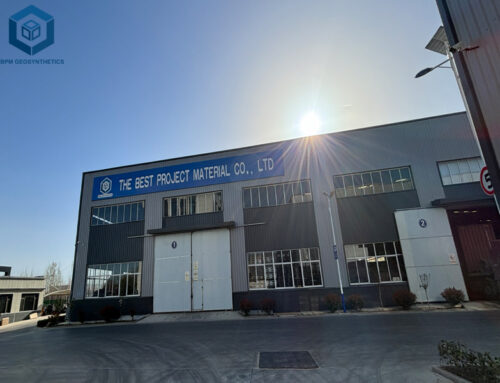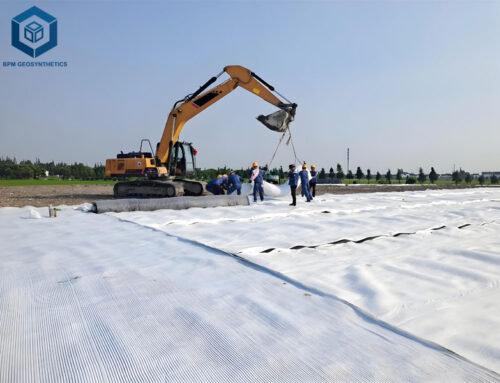Choosing the right Geotextile Fabric For Retaining Walls is crucial to ensure structural stability, longevity, and effective drainage. Geotextiles play a vital role in reinforcing soil, preventing erosion, and managing water flow behind retaining walls. When selecting the appropriate fabric, factors such as soil type, wall height, load-bearing requirements, and environmental conditions must be considered. BPM Geotextile, a trusted manufacturer, offers a range of high-quality geotextile fabrics designed to meet diverse engineering needs. Their products are engineered to provide superior strength, filtration, and durability, making them an excellent choice for retaining wall applications. By understanding the specific requirements of your project and leveraging the expertise of brands like BPM Geotextile, you can ensure the optimal performance and longevity of your retaining wall structure.
1. The Importance Of Geotextile Fabric For Retaining Walls
- Soil Stabilization: Geotextile fabric helps stabilize the soil behind the retaining wall by preventing erosion and controlling soil movement. It enhances the structural integrity of the wall by providing a stable base for the soil.
- Filtration and Drainage: The fabric allows water to pass through while preventing soil particles from clogging drainage systems. This filtration and drainage function helps in preventing water buildup behind the wall, reducing hydrostatic pressure and potential wall failure.
- Reinforcement: Geotextile fabric reinforces the retaining wall structure by distributing loads evenly and reducing the risk of wall deformation. It improves the overall stability of the wall, especially in areas with weak or variable soil conditions.
- Separation of Soil Layers: By acting as a barrier between different soil types, geotextile fabric prevents the mixing of soil layers and maintains the integrity of the structure. This separation helps in preventing settlement and unevenness in the retaining wall.
- Erosion Control: Geotextile fabric controls erosion by stabilizing soil particles and preventing them from being washed away by water runoff. This feature helps maintain the stability and appearance of the retaining wall over time.
- Longevity and Durability: Using geotextile fabric in retaining walls can increase their lifespan by providing additional support and protection against soil movement and degradation. It helps reduce maintenance needs and ensures the long-term integrity of the structure.

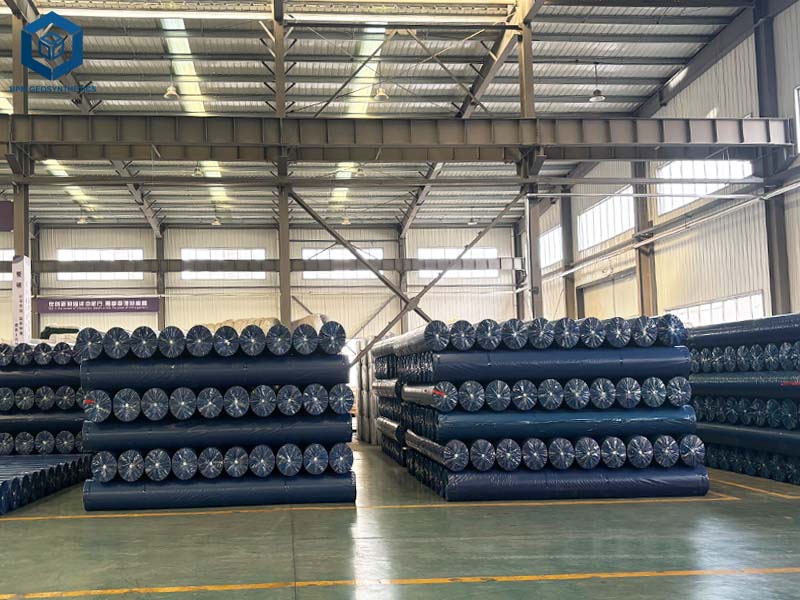
2. What Are The Key Factors To Consider When Choosing Geotextile Fabric For Retaining Walls?
When choosing geotextile fabric for retaining walls, you should consider the following key factors:
2.1 Geotextile Fabric For Retaining Walls – Assess Soil Conditions:
Evaluate the type and properties of the soil to determine the appropriate geotextile. BPM Geotextile offers solutions tailored to different soil types.
2.2 Geotextile Fabric For Retaining Walls – Determine Load Requirements:
Consider the load-bearing capacity needed for the retaining wall. BPM Geotextile provides high-strength options to meet various load demands.
2.3 Geotextile Fabric For Retaining Walls – Check Permeability:
Ensure the geotextile allows proper water drainage to prevent hydrostatic pressure buildup. BPM Geotextile fabrics are designed with optimal permeability.
2.4 Geotextile Fabric For Retaining Walls – Evaluate Durability:
Choose a geotextile that resists UV degradation, chemical exposure, and biological factors. BPM Geotextile products are engineered for long-term durability.
2.5 Geotextile Fabric For Retaining Walls – Verify Compatibility:
Ensure the geotextile is compatible with other materials used in the retaining wall construction. BPM Geotextile offers versatile options for seamless integration.
2.6 Geotextile Fabric For Retaining Walls – Consider Installation Ease:
Select a geotextile that is easy to handle and install. BPM Geotextile fabrics are lightweight and user-friendly.
2.7 Review Certifications:
Check for industry certifications and standards compliance. BPM Geotextile meets international quality and performance standards.
2.8 Compare Cost-Effectiveness:
Balance performance with budget considerations. BPM Geotextile provides cost-effective solutions without compromising quality.
By considering these factors, you can select the most suitable geotextile fabric for your retaining wall project.
3. How To Choose Right Geotextile Fabric For Retaining Walls?
Choosing the right geotextile fabric for retaining walls is a critical decision that directly impacts the stability, durability, and performance of the structure. Below is a comprehensive guide to help you make an informed choice, with a focus on BPM Geotextile, a trusted manufacturer known for its high-quality geosynthetic solutions.
3.1 Understand the Role of Geotextiles in Retaining Walls
- Geotextiles serve multiple functions in retaining walls, including separation, filtration, reinforcement, and drainage.
- BPM Geotextile offers specialized fabrics tailored to each function, ensuring optimal performance for your specific project needs.
3.2 Evaluate Soil Conditions
- The type of soil (clay, sand, silt, etc.) and its properties (drainage, cohesion, particle size, etc.) play a significant role in selecting the right geotextile.
- For example, cohesive soils like clay require geotextiles with excellent filtration properties to prevent clogging, while granular soils like sand may need stronger reinforcement.
- BPM Geotextile provides a range of fabrics designed to address the unique challenges posed by different soil types.
3.3 Determine Load-Bearing Requirements
- Retaining walls must withstand significant loads, including soil pressure, water pressure, and external forces. The geotextile must have adequate tensile strength to reinforce the structure.
- BPM Geotextile offers high-strength woven geotextiles made from polypropylene or polyester, which are ideal for load-bearing applications. These fabrics provide exceptional reinforcement and stability.
3.4 Consider Hydraulic Properties (Permeability and Filtration)
- Proper drainage is essential to prevent water buildup behind the retaining wall, which can lead to hydrostatic pressure and structural failure.
- Choose a geotextile with the right permeability to allow water to pass through while retaining soil particles.
- BPM Geotextile’s non-woven fabrics are engineered for excellent filtration and drainage, making them ideal for retaining walls in areas with high water tables or heavy rainfall.
3.5 Assess Durability and Longevity
- The geotextile must withstand environmental factors such as UV exposure, chemical reactions, and biological degradation over time.
- BPM Geotextile products are manufactured with advanced materials and treatments to ensure long-term durability, even in harsh conditions.
3.6 Choose the Right Type of Geotextile
- Woven Geotextiles: Best for high-strength reinforcement applications. BPM’s woven geotextiles are made from high-tenacity polypropylene or polyester yarns, offering superior tensile strength and puncture resistance.
- Non-Woven Geotextiles: Ideal for filtration and drainage. BPM’s non-woven geotextiles are made from needle-punched polyester or polypropylene fibers, providing excellent permeability and soil retention.
- Composite Geotextiles: Combine the benefits of woven and non-woven fabrics for multi-functional applications.
3.7 Verify Compatibility with Construction Materials
- Ensure the geotextile is compatible with other materials used in the retaining wall, such as aggregates, concrete, or geogrids.
- BPM Geotextile fabrics are designed to integrate seamlessly with a wide range of construction materials, ensuring a cohesive and stable structure.
3.8 Check Certifications and Standards
- Always choose geotextiles that meet international standards such as ASTM, ISO, or GRI. This ensures the product has been tested for quality and performance.
- BPM Geotextile products are certified and comply with global standards, providing peace of mind and reliability.
3.9 Consider Installation Ease
- The geotextile should be easy to handle, cut, and install. Lightweight and flexible fabrics simplify the installation process.
- BPM Geotextile fabrics are designed for ease of use, reducing labor costs and installation time.
3.10 Factor in Cost-Effectiveness
- While initial costs are important, consider the long-term benefits of using high-quality geotextiles. Investing in durable and reliable products like BPM Geotextile can reduce maintenance and repair costs over the lifespan of the retaining wall.
3.11 Consult with Experts
- If you’re unsure about the best geotextile for your project, consult with geotechnical engineers or suppliers. BPM Geotextile offers technical support and expertise to help you select the most suitable fabric for your retaining wall.
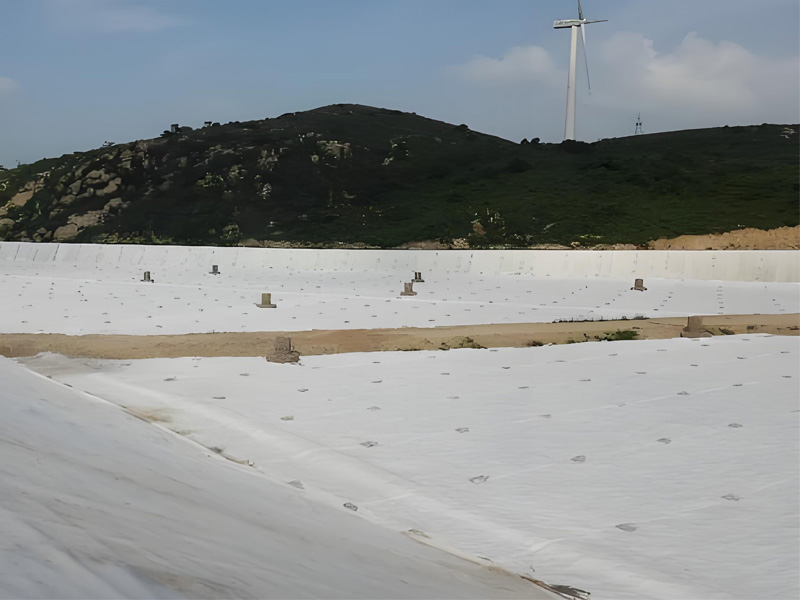
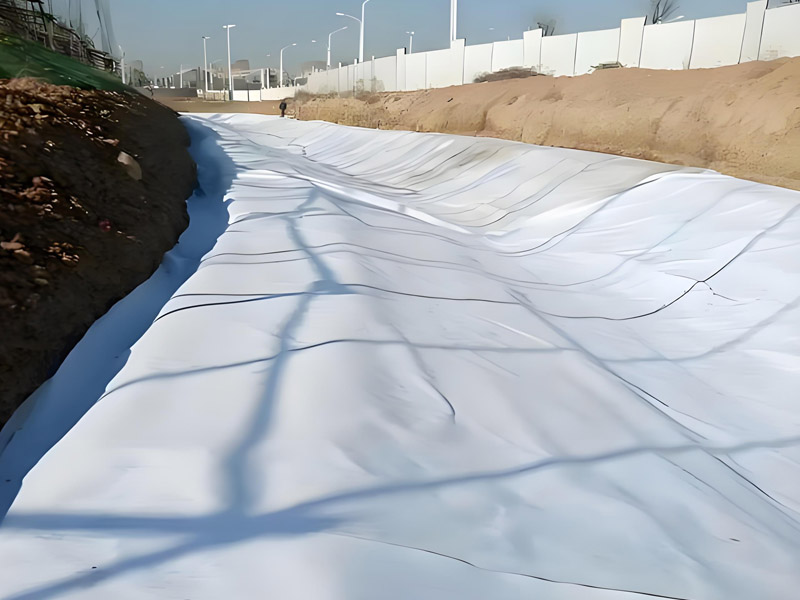
4. How to install Geotextile Fabric For Retaining Walls?
4.1 Preparation Work
- Measurement and Planning: Accurately measure the construction site to determine the location, dimensions, and shape of the retaining wall.
- Material Selection: Choose the appropriate type and specifications of BPM geotextile fabric based on the project requirements and soil conditions.
4.2 Site Preparation
- Clear the Area: Remove any vegetation, debris, or obstacles from the area where the retaining wall will be constructed.
- Level the Ground: Ensure the ground is level and compacted to provide a stable base for the retaining wall.
4.3 Installation of Geotextile Fabric
- Unroll the Fabric: Carefully unroll the BPM geotextile fabric on the prepared ground, ensuring it is flat and free of wrinkles.
- Secure the Fabric: Secure the edges of the fabric with stakes or other suitable methods to prevent it from shifting during construction.
- Connect the Panels: If multiple panels of geotextile fabric are needed, overlap them by at least 6 inches (15 cm) and secure the seams with appropriate fasteners or adhesives.
4.4 Construction of Retaining Wall
- Layering Materials: Place the first layer of stones or other materials for the retaining wall on top of the geotextile fabric.
- Compaction: Compact each layer of materials thoroughly to ensure stability and prevent settling.
- Repeat Layers: Continue adding and compacting layers until the desired height of the retaining wall is reached.
4.5 Backfilling and Finishing
- Backfill with Soil: Once the retaining wall is constructed, backfill behind it with suitable soil, ensuring it is well-drained and free of organic matter.
- Cover with Topsoil: After backfilling, cover the area with topsoil and plant grass or other vegetation to blend the retaining wall into the surrounding landscape.
BPM Geotextile has a professional installation team that can assist you throughout the process. Their team members have the relevant skills and experience to ensure that your geotextile fabric is installed correctly and efficiently. They also prioritize clear communication, mutual trust, and consistent commitment to delivering high-quality results.
In summary, installing geotextile fabric for retaining walls involves careful preparation, proper installation techniques, and professional assistance when needed. With BPM Geotextile’s professional installation team, you can be confident that your project will be completed to the highest standards.
5. Why Choose BPM Geotextile?
- High-Quality Materials: BPM uses premium polypropylene and polyester to manufacture geotextiles that meet the highest industry standards.
- Wide Range of Products: Whether you need woven, non-woven, or composite geotextiles, BPM offers a variety of options to suit your project requirements.
- Global Certifications: BPM Geotextile products are certified and tested for quality, ensuring reliability and performance.
- Technical Support: BPM provides expert guidance to help you choose the right geotextile and optimize your retaining wall design.
By considering these factors and choosing BPM Geotextile, you can ensure the success of your retaining wall project. Their high-performance fabrics provide the strength, durability, and functionality needed to create a stable and long-lasting structure.

